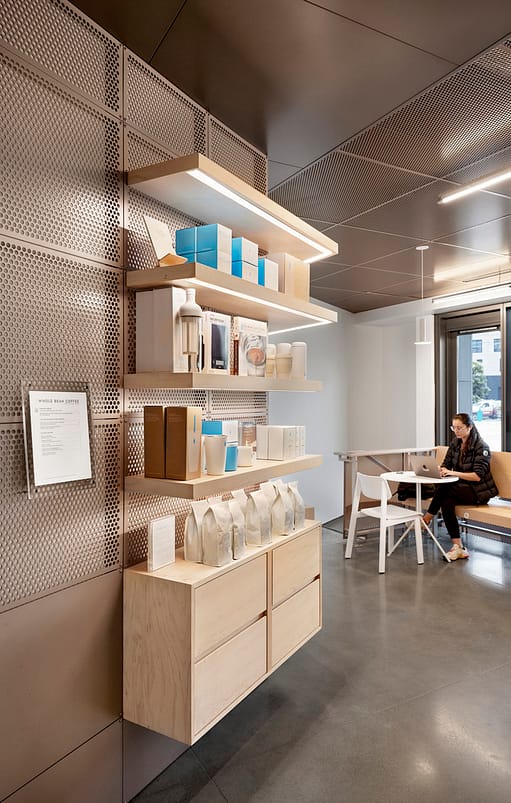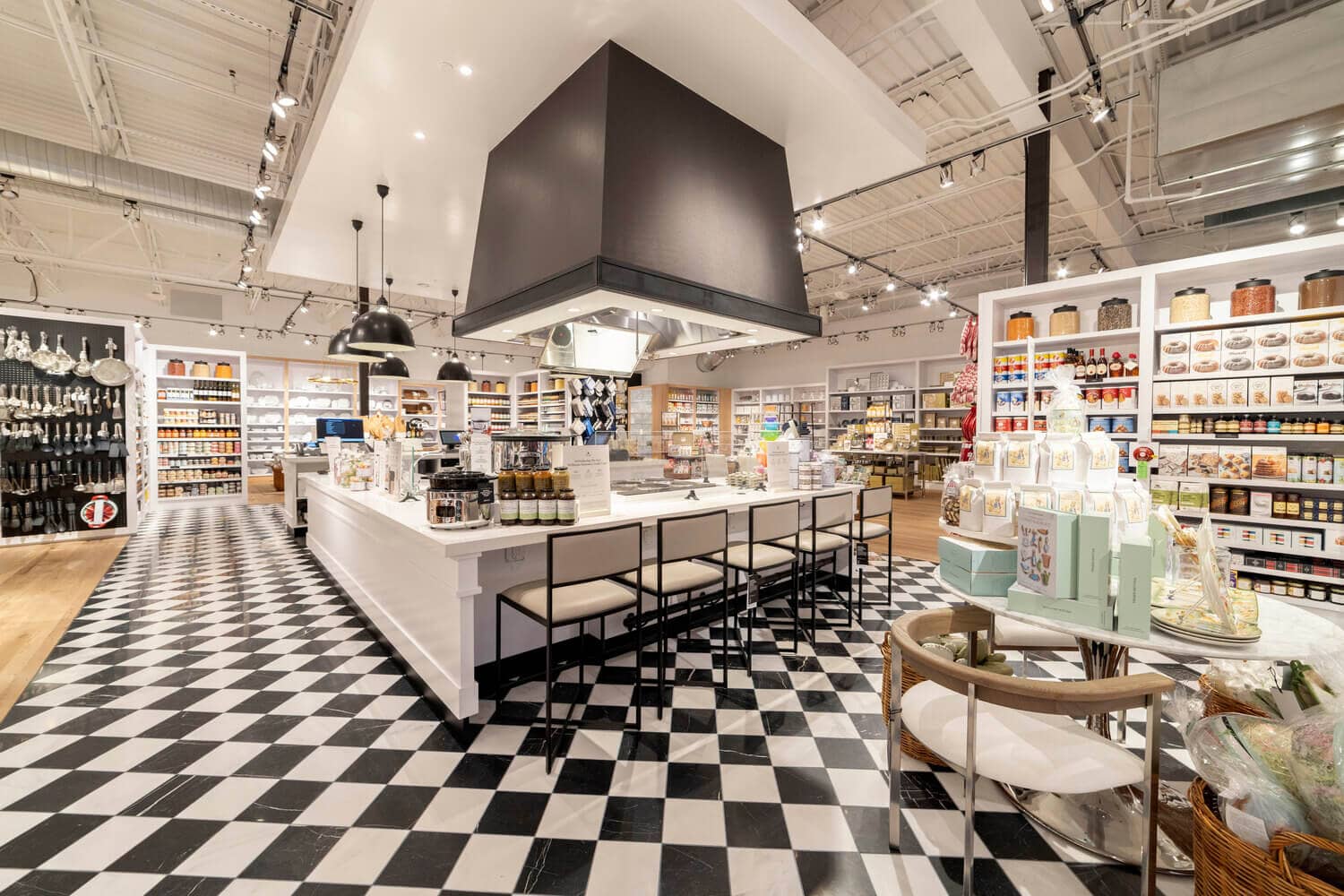The Elf Had It Right:
The Impact of Visual Merchandising
By Ron Singler
Principal, Design Director · Retail
During the recent holidays, while watching the 2003 movie Elf starring Will Ferrell, I was thrilled once again by the scene where Buddy the Elf spends the night in a large New York department store. While there he redecorates the entire Santa Land department into a winter wonderland full of surprise and delight. In this scene, Buddy instinctively understood the power and impact of visual merchandising in setting the scene to sell the experience. That is what we do as designers collaborating with our retail clients: strategize and set the scene for the visual expression of merchandise and the customer experience. We develop the architecture to optimally support and facilitate the presentation of our client’s product(s) and brand story.
The challenge is to ensure a memorable customer experience that starts outside the store and continues through to checkout. To make that happen we draw on many of the principles found in theater and forward-looking exhibit design, as well as classic museum displays, combined with our expertise and attention to navigation. Lighting, framing, balance, perception, and a variety of architectural features are elements that contribute to this effort. The goal is to create an opportunity that engages the senses and enables the customer to emotionally and intuitively connect with the products displayed, easily understanding how those products might benefit their objectives, needs, or lifestyle. With that in mind, we design flexible spaces that respond to themes, campaigns, and special events. We establish strong focal points yet accommodate different product and display types with options to create mood and a framework for storytelling.
For consumer brands visual merchandising has been a way to differentiate their enterprise and create drama around selling products since the late 1700s when larger store windows became popular. But through the years as retail became more transactional with the introduction of big box stores and as real estate groups took over ownership of large department stores, the dynamic changed and the emphasis on visual merchandising became less important. Today, however, it is growing in importance and expanding with options made possible by digital technologies and new materials. As brick-and-mortar stores and malls are seen as consumer destinations, retailers increasingly understand the power of experience and emotional response not only to sell goods but to attract and build a loyal customer base.

Blue Bottle Coffee | Photography by Cesar Rubio




And there is science behind the power of visual merchandising. The internet is awash with statements from reputable sources that maintain 90% of information transmitted to the brain is visual and that the brain processes visual data 60,000 times faster than it processes text, although those statements are questioned by some. Nevertheless, visual learners make up 65% of the population so appealing to them is key. Plus, we know that the brain’s processing of visual images is as fast as a stunning 13 milliseconds. Hence, the impact of the visual experience.
But the best proof for any concept is a demonstration of its success and for that there is a memorable case in point: Recently, at a design gathering, Pete Nordstrom was speaking and broadcasting a version of his Nordy Pod in one of the breakout ballrooms. In that episode, Pete had Domenico De Sole, CEO of Gucci and Tom Ford International, as his guest. Pete’s discussion focused on Domenico’s career and how trained as a lawyer he has been able to successfully guide Gucci from bankruptcy to its elevated status as an iconic luxury conglomerate.
One of the last questions Pete asked Domenico was if he had any insights or suggestions for Nordstrom. Domenico thought for a minute, praised Nordstrom for its customer service and great products, and then said if they could focus on one thing for the future it should be visual merchandising. He went on to tell how he and Tom Ford would always make the image of the store and the display of the products the most important part of the brand experience. Ford's judgment and expertise in brilliantly transforming the House of Gucci and subsequent creation and merchandising of the extremely successful Tom Ford brand are, of course, legendary.
Well aware of the power of visual merchandising, we collaborate with our retail clients to literally set the stage for their success and a memorable brand experience.

Confidential Client | Photography by Ryan Humphries
Ron Singler
Principal, Design Director · Retail
Contact Ron: r.singler@interiorarchitects.com

